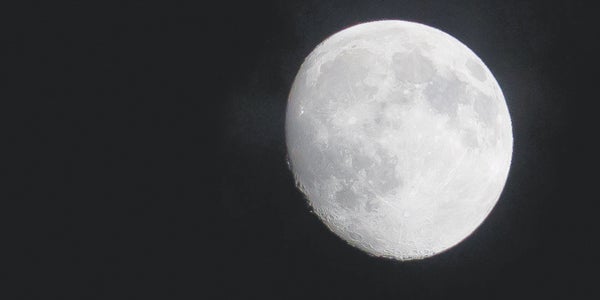3 days before blue moon, group takes night hike to Jane Bald
Published 9:30 am Monday, August 3, 2015

Star Photos/Bryce Phillips
This picture of the moon was taken Tuesday night in Roan Mountain during the Roan Mountain State Park Full Moon Hike guided by Park Ranger Meg Guy.
On July 20, 1969, Apollo 11 landed on the moon, and mankind walked on a celestial body other than Earth for the first time ever.
Forty-six years later, people still look up and wonder at the bright object that glows in the night sky.
Tuesday night in Roan Mountain, a group of curious and excited hikers got a lesson on the moon as Roan Mountain State Park hosted a Full Moon Balds Hike guided by park ranger Meg Guy.
The name of the hike was somewhat of a misnomer since the full moon did not occur until Friday. However, there was a reason for holding the hike on Tuesday instead of Friday, explained Guy. On the night of the full moon, the moon will rise at the same time the sun sets, making it hard to see in the sky from the Balds. However, on Tuesday night, the moon had risen before the sun set, allowing for good viewing.
“So, if the clouds are not in the way, the moon will already be up as the sun goes down as we start hiking,” Guy said to the group. “… Also, with the topography of the mountains, moonrise and when you can actually see the moon are quite different. I wanted to ensure that we had enough time that we would actual see the moon on our hike.”
At 8:30 p.m., roughly 15 moongazers piled into cars at Roan Mountain State Park headquarters and drove eight miles up to Carvers Gap, where at twilight, geared with head lamps and flashlights, they started their hike up the Appalachian Trail en route to the top of Jane Bald. The Roan Mountain Balds are ideal for moon- and stargazing because they are treeless, lending to an unobscured view of the sky.
As the group hiked up through the rhododendron that line the AT at Carvers Gap, the trail was still quite visible and easily traversed without help from a lamp or flashlight. As the trekkers entered into one of the rarest ecosystems in Roan Mountain, however, the flashlights came on.
The hikers had entered the spruce-fir forest of the Southern Appalachian Mountains. The forest covered the AT for a short section, before opening back up into the bald. While in the middle of the forest, Guy stopped the group and described to them why they were standing in rare surroundings.
“The reason it is so rare is because you do not think of balsam species and you do not think of fir species being this far South,” Guy said. “This is a boreal forest. This is a species you would find up north and in Canada. There was a time that the spruce-fir forest extended all the way south to Louisiana, when the climate was cooler. As the climate warmed and the glaciers retreated, the forest and ecosystems retreated northward to high latitudes where it remained cool.
“However, these little pockets of high elevation, sprinkled here throughout the Southern Appalachians, remained cool enough for these ecosystems to thrive.”
Out of the forest, the moongazers kept on hiking up the ascending trail before stopping again under the glow of the moon, which had came out from behind some clouds. With the group stopped, Guy picked out three participants, one who acted as the sun, one who acted as the moon and one who acted as Earth. With her three make-shift celestial bodies, Guy showed that full moons happen when the sun and moon are at exact opposites of each other, with Earth setting between the two.
“This is a full moon,” Guy said as she placed her three volunteers where she needed them. “I bet you are saying to yourself, ‘Well, wouldn’t Earth be casting a shadow on the moon, if the earth is in between the sun and the moon?’ What makes the difference is the fact that Earth’s orbital plane and the moon’s orbital plane are offset by five degrees, so the moon is either five degrees higher or five degrees lower than Earth, usually.”
After Guy finished her explanation, the group continued hiking. They would take one more rest stop before reaching the summit of Jane Bald.
During the last break, Guy talked about the many old wives’ tales people believe about the moon. One of the beliefs dates back to the ancient Greek philosopher Aristotle, who postulated the theory that the moon and its gravitational pull had a direct effect on human brains, explaining why it seems that crime and crazy behavior increase during full moons. It is this thinking that led to the origin of the word lunatic.
With everyone feeling a little crazier, the hike went on, finishing at the summit, where the final lesson of the night commenced. Guy talked about the most prevalent scientific theory of how the moon came into existence. According to NASA scientist, the moon was formed roughly 4.5 billion years ago after a massive collision between Earth and a Mars sized planetoid. Debris from the collision was thrown into orbit and slowly collected into what now is the moon.
After the last talk of the night, the group wandered around on top of the bald, before, with the light of the moon shining down, making their way back down to where the journey began.



